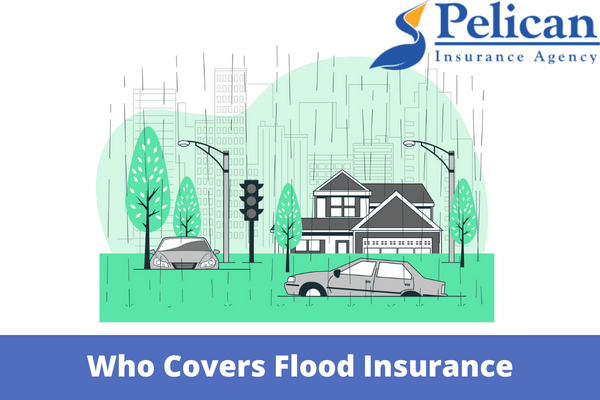Who Covers Flood Insurance

One inch of flood can cause up to $25,000 in property damage. The majority of homeowners’ policies don’t cover flood damage. Flood insurance is an entirely separate policy that can cover structures, the contents of a building, or both. Protecting your most valuable financial assets, including your home, business, and possessions, is essential.
What Is Flood Insurance?
Flood insurance is a form of property insurance that protects a dwelling against water-related losses caused by flooding. Heavy or prolonged rainfall, melting snow, coastal storm surges, clogged storm drainage systems or the failure of a levee dam can all lead to flooding.
In many locations, a flood is regarded as a significant vis event, and the damage or destruction it causes is not covered if you do not obtain additional insurance.
The National Flood Insurance Program (NFIP) does provide landowners, renters, and businesses with flood insurance, which expedites their recovery after floodwaters recede. The NFIP collaborates with communities mandated to adopt and enforce floodplain management regulations to mitigate the effects of flooding.
How Flood Insurance Works
A policy for flood insurance, a type of catastrophe insurance, differs from the basic hazard insurance coverage included in a homeowners insurance policy. There are flood insurance policies available for all residential and commercial properties.
Standard homeowner’s insurance protects against interior water damage caused by storms or burst pipes. It does not, however, typically cover destruction or damage caused by floodwaters. Those who own property in a flood-prone area generally are required to obtain specialized insurance.
Flood insurance functions similarly to other types of insurance. The insured (the property owner) pays an annual premium based on the flood risk of the property and the chosen deductible. The homeowner is covered if the property or its contents are damaged or destroyed by flooding caused by an external event such as rain, snow, storms, or infrastructure collapse or failure. They receive the cash necessary to repair the damage and rebuild the structure up to the policy maximum.
The Cost of Flood Insurance
The NFIP regulates the retail prices of flood insurance, and issuers’ premiums are identical. If you continue living in a flood zone or a community that participates in the NFIP, the NFIP can assist you in locating an insurance agent. To determine the cost of your policy, your agent will consider the location and structure of your home and its proximity to a body of water and elevation.
The coverage type, such as replacement cost versus actual cash value, will also impact prices. Pricing can be affected by factors such as the flood zone designation, the property’s age, and the number of floors.
Conclusion
Flood insurance is typically a good idea, but only if you live in an area that has historically experienced flooding. Nevertheless, flooding can occur anywhere. Your home can be flooded due to storms, melting snow, or clogged drainage systems, even if you do not live near water. At Pelican Insurance Agency, we can help determine whether you need flood insurance and how much coverage is appropriate for your home. Contact us today to learn more about flood insurance’s benefits and discuss options for your property.